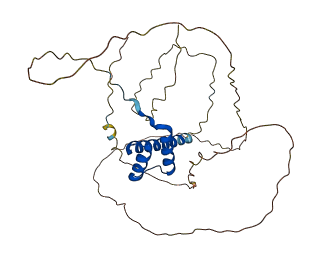| animal organ development |
Development of a tissue or tissues that work together to perform a specific function or functions. Development pertains to the process whose specific outcome is the progression of a structure over time, from its formation to the mature structure. Organs are commonly observed as visibly distinct structures, but may also exist as loosely associated clusters of cells that work together to perform a specific function or functions. |
| animal organ formation |
The process pertaining to the initial formation of an animal organ from unspecified parts. The process begins with the specific processes that contribute to the appearance of the discrete structure, such as inductive events, and ends when the structural rudiment of the organ is recognizable, such as a condensation of mesenchymal cells into the organ rudiment. Organs are a natural part or structure in an animal or a plant, capable of performing some special action (termed its function), which is essential to the life or well-being of the whole. The heart and lungs are organs of animals, and the petal and leaf are organs of plants. In animals the organs are generally made up of several tissues, one of which usually predominates, and determines the principal function of the organ. |
| cell differentiation |
The process in which relatively unspecialized cells, e.g. embryonic or regenerative cells, acquire specialized structural and/or functional features that characterize the cells, tissues, or organs of the mature organism or some other relatively stable phase of the organism's life history. Differentiation includes the processes involved in commitment of a cell to a specific fate and its subsequent development to the mature state. |
| determination of left/right symmetry |
The establishment of an organism's body plan or part of an organism with respect to the left and right halves. The pattern can either be symmetric, such that the halves are mirror images, or asymmetric where the pattern deviates from this symmetry. |
| digestive system development |
The process whose specific outcome is the progression of the digestive system over time, from its formation to the mature structure. The digestive system is the entire structure in which digestion takes place. Digestion is all of the physical, chemical, and biochemical processes carried out by multicellular organisms to break down ingested nutrients into components that may be easily absorbed and directed into metabolism. |
| embryonic skeletal system development |
The process, occurring during the embryonic phase, whose specific outcome is the progression of the skeleton over time, from its formation to the mature structure. |
| intestinal epithelial cell development |
The process whose specific outcome is the progression of a columnar/cuboidal epithelial cell of the intestine over time, from its formation to the mature structure. |
| middle ear morphogenesis |
The process in which the anatomical structures of the middle ear are generated and organized. The middle ear is the air-filled cavity within the skull of vertebrates that lies between the outer ear and the inner ear. It is linked to the pharynx (and therefore to outside air) via the Eustachian tube and in mammals contains the three ear ossicles, which transmit auditory vibrations from the outer ear (via the tympanum) to the inner ear (via the oval window). |
| negative regulation of apoptotic process |
Any process that stops, prevents, or reduces the frequency, rate or extent of cell death by apoptotic process. |
| negative regulation of chondrocyte differentiation |
Any process that stops, prevents, or reduces the frequency, rate or extent of chondrocyte differentiation. |
| negative regulation of transcription by RNA polymerase II |
Any process that stops, prevents, or reduces the frequency, rate or extent of transcription mediated by RNA polymerase II. |
| pancreas development |
The process whose specific outcome is the progression of the pancreas over time, from its formation to the mature structure. The pancreas is an endoderm derived structure that produces precursors of digestive enzymes and blood glucose regulating enzymes. |
| regulation of transcription by RNA polymerase II |
Any process that modulates the frequency, rate or extent of transcription mediated by RNA polymerase II. |
| skeletal system development |
The process whose specific outcome is the progression of the skeleton over time, from its formation to the mature structure. The skeleton is the bony framework of the body in vertebrates (endoskeleton) or the hard outer envelope of insects (exoskeleton or dermoskeleton). |
| skeletal system morphogenesis |
The process in which the anatomical structures of the skeleton are generated and organized. |
| spleen development |
The process whose specific outcome is the progression of the spleen over time, from its formation to the mature structure. The spleen is a large vascular lymphatic organ composed of white and red pulp, involved both in hemopoietic and immune system functions. |


